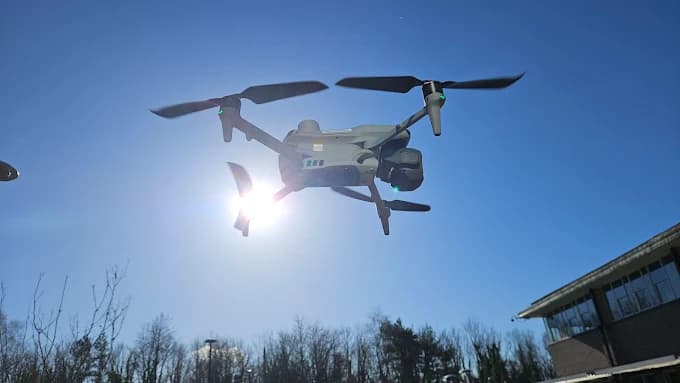
A standard drone roof inspection is completed in under an hour. I rarely spend more than 1-2 hours on a residential drone roof survey.
While the actual flight time for a typical home is often just 15-20 minutes, my on-site process also includes a mandatory walk-around for hazards, system calibrations, and setting a safe launch zone. This is why the full hour is a more realistic timeframe.
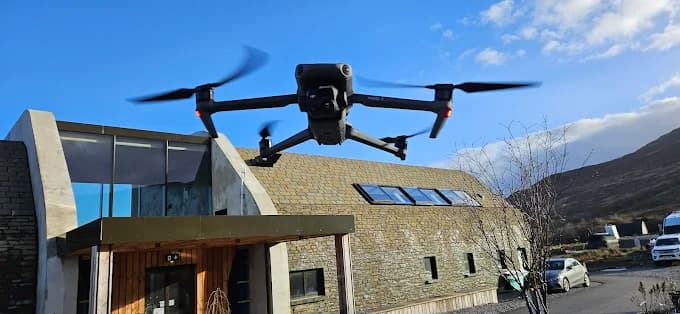
Whether you're assessing potential storm damage or scheduling a pre-purchase survey, this guide gives you my professional breakdown of the entire process, revealing how the timeline shifts based on your property's unique features.
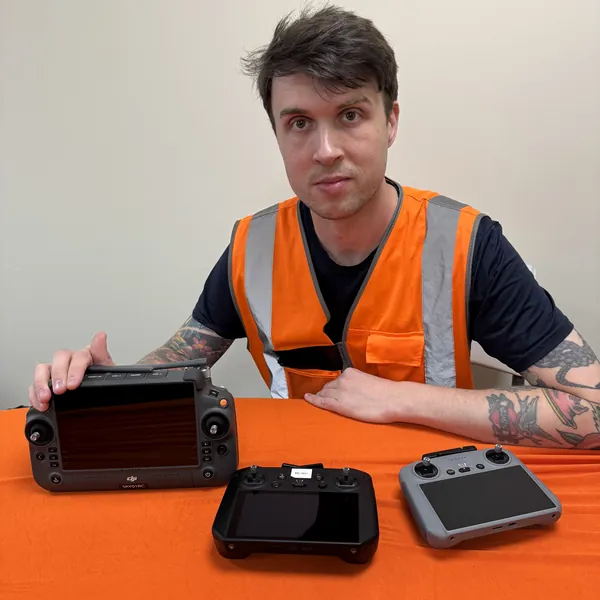
30 Second Summary
- Standard drone roof inspections typically take under 1 hour, including preparation, planning, and flight time.
- Residential properties usually require 15-20 minutes of actual drone flight time.
- Larger properties need additional time, with approximately 15-20 minutes per extra 1,000 square feet.
- Complex roof designs significantly extend inspection duration, from 15 minutes for simple gables to 60 minutes for Victorian designs.
- Post-flight data processing and report preparation adds 3-7 hours beyond the drone operation time.
Standard drone roof inspections are typically completed in under 1 hour
Typically, standard drone roof inspections take less than an hour to complete from setup to finish. This timeframe includes the initial equipment preparation, flight planning, and the actual drone operation over your roof.
Most residential properties require only 15-20 minutes of actual flight time.
You'll find the inspection process is quite efficient. Your drone operator will arrive, conduct a quick site assessment, set up the equipment, and launch the drone.
The first thing I always do on-site is a quick walk-around to spot potential hazards like power lines or overhanging trees before I even think about launching.
They'll systematically capture high-resolution images of your entire roof surface, focusing on potential problem areas. Weather conditions can affect timing – wind, rain, or poor lighting might extend the process or require rescheduling.
For larger or more complex roofs with multiple elevations, you might need to add an extra 15-30 minutes to the timeline.
Factor | Impact on Time | Example |
|---|---|---|
Property Size | Increases flight and processing time. | +15-20 min per 1,000 sq ft |
Roof Complexity | Requires more angles and slower flight. | Dormers, turrets, skylights |
Weather | Can cause delays or rescheduling. | High winds, rain, poor light |
Reporting Detail | More in-depth analysis takes longer. | Thermal imaging, measurements |
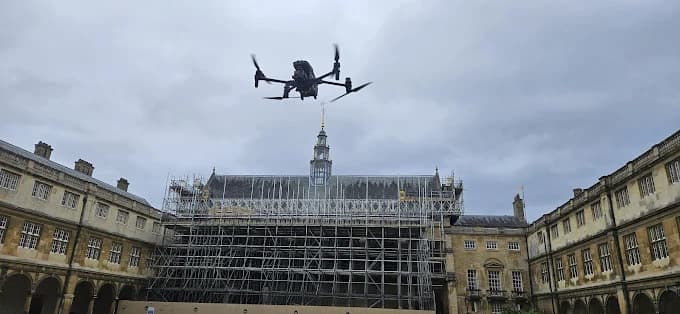
Drone vs. Manual Inspection: A Time Comparison
While a drone can survey a roof in under an hour, a traditional manual inspection is a much more time-consuming process. For a standard residential home, you can expect a manual inspection to take anywhere from 1 to 3 hours on-site.
This longer duration is due to the nature of the work. An inspector needs to set up ladders, put on safety gear, and then physically walk every square foot of your roof. They'll be taking photos and making notes by hand, which is methodical but slow.
For steeper or more complex roofs, this process takes even longer due to the increased safety risks. In contrast, I can capture thousands of high-resolution images covering the entire roof, including hard-to-reach areas, in a fraction of the time it would take to walk it.
Feature | Drone Inspection | Manual Inspection |
|---|---|---|
On-Site Time | 15-60 minutes | 1-3 hours |
Setup | Quick (drone & controller) | Slower (ladders, safety gear) |
Coverage | Comprehensive & consistent | Can miss spots; depends on access |
Safety | Drone operator stays on the ground | Inspector on the roof (high risk) |
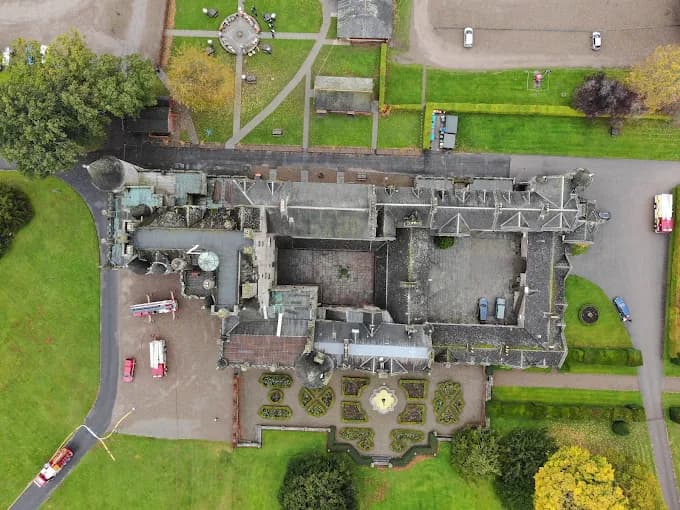
Larger properties naturally extend the inspection time
When you own a larger property, inspection times naturally increase beyond the standard hour timeframe. For every additional 1,000 square feet of roofing, you can expect approximately 15-20 minutes of extra inspection time. Complex rooflines with multiple elevations, dormers, or architectural features will further extend the process.
Commercial properties or multi-building estates might require half a day or more to thoroughly document all surfaces.
For these larger sites, I always budget extra time for moving my launch position. You often can't see the entire roof from one spot, so repositioning is key to getting full coverage without losing signal.
Weather conditions also impact larger inspections disproportionately—strong winds may restrict flight patterns, requiring multiple setup positions around your property.
If you're scheduling a drone inspection for a substantial estate or commercial complex, it's wise to allocate a 2-3 hour window at minimum. Most professional inspectors will provide time estimates based on your property's specific dimensions and complexity before booking the appointment.
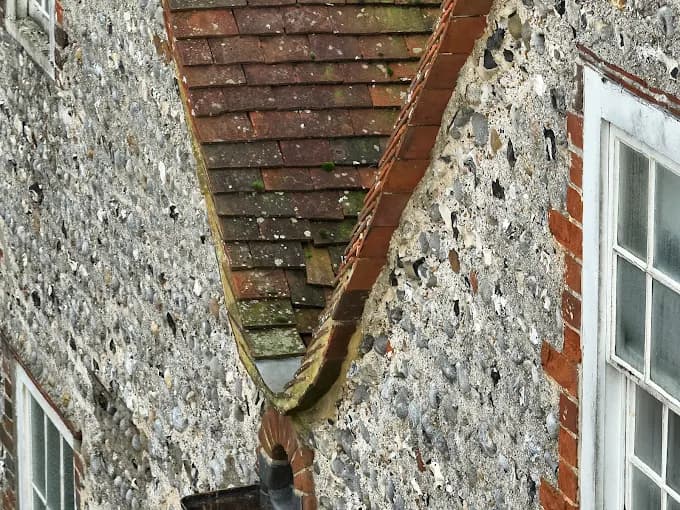
Complex roof designs require longer survey durations
Beyond just square footage, architectural complexity significantly impacts drone inspection timeframes. If your roof features multiple dormers, skylights, chimneys, or varying elevations, you'll need to allocate extra time for thorough documentation.
Roof Style | Key Features | Estimated Flight Time |
|---|---|---|
Simple Gable | A-frame, single ridge | 15-20 minutes |
Hip Roof | Slopes on all four sides | 20-30 minutes |
Complex / Multi-Level | Dormers, valleys, multiple levels | 30-45 minutes |
Ornate Victorian | Turrets, steep pitches, decorative elements | 45-60 minutes |
A simple gabled roof might require only 15-20 minutes of flight time. In contrast, a complex Victorian with steep pitches, turrets, and ornamental features could extend to 45-60 minutes.
The drone operator must capture each architectural element from multiple angles to ensure complete assessment.
When I encounter a complex roof, I often switch to a manual flight mode. This gives me the precision needed to get close-up shots from every angle, something an automated flight plan often struggles with.
Weather conditions compound this complexity—wind particularly affects maneuverability around intricate structures. Your drone inspector may need to fly at slower speeds and maintain closer proximity to detail areas, further extending the survey duration.
For highly complex designs, inspectors sometimes schedule additional time or even multiple sessions to ensure comprehensive coverage.
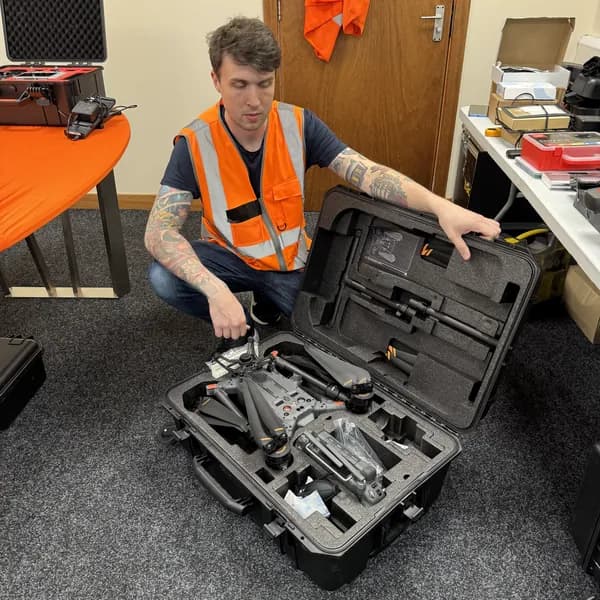
Processing and reporting add extra time beyond the flight
The actual drone flight represents only a portion of the total inspection process. Once your aerial survey is complete, technicians need to download, organize, and analyze the captured imagery. This data processing typically adds 1-3 hours to the timeline, depending on the volume of photos and video collected.
You'll also need to factor in report preparation time.
This is where the real work begins for me. The flight itself is just data collection; it's in the analysis that I can connect the dots and give you a report that tells you what you need to know about your roof's health.
Professional drone inspectors transform raw footage into comprehensive documentation that highlights damage, maintenance issues, and areas of concern. This reporting phase generally requires 2-4 hours as inspectors annotate images, create measurement overlays, and compile their findings into a deliverable format.
For a complete roof assessment, expect the post-flight work to take longer than the actual drone operation—sometimes significantly so when detailed analysis is required.
Phase | Description | Estimated Duration |
|---|---|---|
On-Site Setup & Flight | Pre-flight checks, flight path planning, and aerial data capture. | Under 1 hour |
Data Processing | Downloading, organizing, and analyzing photos and videos. | 1-3 hours |
Report Preparation | Annotating images and compiling findings into a final document. | 2-4 hours |
Total Time to Delivery | From arrival on-site to receiving the final report. | 3-8 hours |
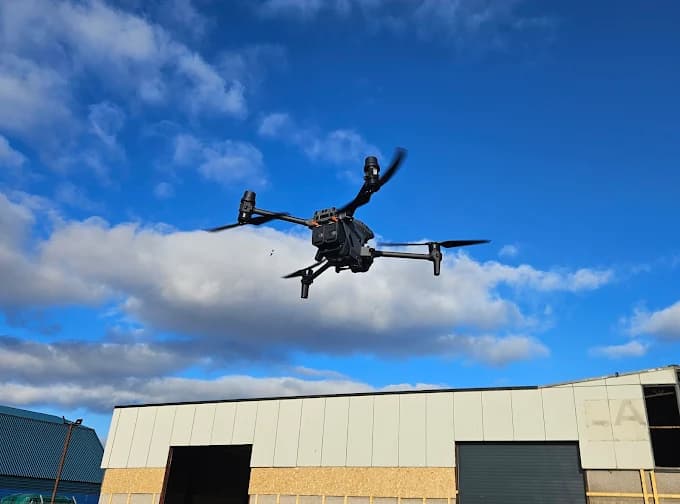
Many Drone Service providers offer same-day reporting for faster results
Despite lengthy processing requirements, many drone inspection companies now prioritize rapid turnaround times. Numerous providers deliver complete inspection reports within 24 hours of the flight.
When choosing a service, you'll find companies advertising same-day delivery as a competitive advantage.
These expedited services typically include all essential inspection elements: high-resolution imagery, damage assessment, measurements, and repair recommendations.
While a fast turnaround is great, I always advise clients to check what's included. A truly useful report takes time to compile, so it's important to ensure you're not just getting a photo dump, but a proper analysis.
Many providers have streamlined their workflows using AI and specialized software to accelerate the processing phase without sacrificing quality.
You'll generally pay a premium for same-day reporting, but the cost difference is often justified when you're dealing with urgent situations like storm damage or time-sensitive real estate transactions. Ask potential providers about their fastest reporting options and what specifically is included in their expedited packages.

How to Prepare for Your Drone Roof Survey to Save Time
You can help ensure the inspection is efficient by preparing a few things in advance:
Clear the Launch Area: Ensure the area around your property is free of obstructions like vehicles, patio furniture, or children's toys to give the drone operator a safe space for takeoff and landing.
Provide Access Info: If your property has gates, locked areas, or pets that need to be secured, provide this information to the inspector ahead of time.
Note Your Concerns: Have a list of any specific leaks, visible damage, or areas of concern ready. Pointing these out beforehand helps the drone operator focus their attention effectively.
Frequently Asked Questions
Do I Need to Be Present During the Drone Roof Inspection?
You don't typically need to be present during a drone roof inspection. The drone operator can access your roof remotely without disturbing you. However, you might want to be available to discuss findings afterward or grant initial property access. Personally, I prefer it when homeowners are available at the end so I can walk them through the initial findings on my tablet right after I land. Some homeowners prefer to watch the process, which is fine too. It's best to check with your specific inspection company about their preferences.
What Weather Conditions Will Delay or Cancel an Inspection?
Strong winds, rain, snow, and heavy fog will delay or cancel your drone inspection. Wind speeds exceeding 15-20 mph make drones unstable and affect image quality. My personal rule is if I wouldn't feel safe on a ladder in that wind, I'm not putting my drone up either. Precipitation can damage drone electronics and create unsafe flying conditions. Poor visibility from fog or low cloud cover prevents accurate imaging. Most professional inspectors will reschedule if conditions aren't ideal for your safety and to ensure quality results.
How Much Does a Typical Drone Roof Inspection Cost?
You'll typically pay between £150 and £400 for a standard drone roof inspection. Pricing varies based on your roof's size, complexity, location, and the level of detail needed in the report. For commercial properties or larger homes, expect to pay £500 or more. Many companies offer tiered packages that include different levels of analysis, with basic visual assessments costing less than comprehensive inspections with thermal imaging.
Can Drones Detect Moisture or Leaks Beneath Roofing Materials?
Yes, drones can detect moisture or leaks beneath roofing materials when equipped with thermal imaging cameras. You'll see these specialized sensors identify temperature differences that indicate trapped moisture. It's important to remember that thermal cameras show these temperature differences, not moisture itself. My job is to interpret those differences to see if they indicate a potential leak. They can't penetrate completely through your roof, but they'll spot thermal anomalies where water has entered. For comprehensive detection, you'll need a drone with infrared technology, which reveals hidden moisture problems that aren't visible to the naked eye.
What Qualifications Should a Drone Roof Inspector Have?
A qualified drone roof inspector should hold Civil Aviation Authority (CAA) permissions, such as a GVC (General Visual Line of Sight Certificate), have professional liability insurance, and possess roofing knowledge. Look for certifications in thermography if you want infrared inspections. They'll need technical skills to operate drones effectively and interpret the captured data. Experience with roof inspections is crucial. Beyond the license, I'd say the most important qualification is experience—knowing what a small problem looks like from the air versus something that needs immediate attention is a skill that only comes from inspecting hundreds of roofs.
Get a Fast, Accurate Drone Roof Inspection with a Vetted Professional Drone Pilots
As we've covered, a drone roof inspection is swift and safe, with on-site work completed in under an hour. However, the true value comes from a detailed report, and that requires a qualified pilot with specific roofing expertise.
This is the exact challenge HireDronePilot solves. We connect you with local drone operators who possess the GVC qualifications and survey experience needed for high-quality roof inspections. As the UK's premier managed marketplace, HireDronePilot is dedicated to connecting businesses with verified professional drone pilots for hire. Our platform allows you to streamline drone services through competitive bidding, ensuring quality, compliance, and value for every aerial project across the United Kingdom.
To find an expert for your property, visit us at https://hiredronepilot.uk/.
Don't wait for a small issue to become a major problem. Get a clear view of your roof's condition by requesting free, no-obligation quotes for your drone roof inspection today.
About the Author

Written by
Peter Leslie
Peter Leslie is a CAA-approved commercial drone pilot with 10+ years experience and over 10,000 flight hours. He holds the GVC and A2 CofC drone licences with full CAA Operational Authorisation. Peter is a member of ARPAS-UK, the UK's non-profit trade association for the drone industry. He founded HireDronePilot to connect UK businesses with qualified, insured drone operators.
Looking for More Drone Work?
Join the UK's leading network of professional drone pilots and grow your business.
Open Access
Bid on any job - all jobs open to all pilots
Grow Revenue
Access high-value commercial projects
Stay Busy
Fill your schedule with regular work
Related Articles

Our Drone Survey Service In Stirling, Scotland
Bringing you Stirling drone survey data from areas no one else can fly.

How Much Does A Drone LiDAR Survey Cost
Forecasting your drone LiDAR survey cost requires understanding what's hidden beyond the initial quote.

Step By Step Process Of Drone LiDAR Survey
Next, discover the crucial post-flight steps that determine your survey's success.
